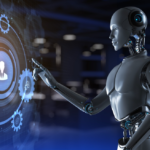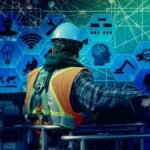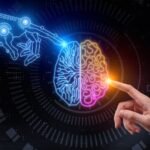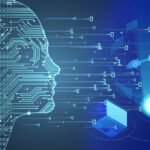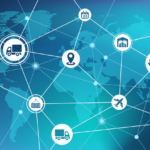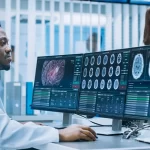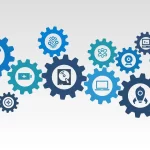This 3D printed gripper doesn’t need electronics to function
Researchers at the University of California San Diego, in collaboration with the BASF corporation, have developed a remarkable soft robotic gripper that boasts unique features. This gripper is 3D printed in one piece and does not require any electronics to function effectively.
The team’s objective was to create a soft gripper that could be used immediately after being 3D printed, complete with built-in gravity and touch sensors. The result is a gripper capable of picking up, holding, and releasing objects, a feat not achieved by any gripper before.
The gripper’s design incorporates a series of valves that enable it to grip upon contact and release at the right moment. Yichen Zhai, the leading author of the paper detailing the research, explains that by simply turning the gripper horizontally, a change in airflow triggers the release of the object held by its two fingers.
One of the remarkable aspects of this gripper is its fluidic logic, allowing it to remember when it has grasped an object and is holding onto it. When it senses the weight of the object pushing to the side as it rotates horizontally, it intuitively releases the object.
Soft robotics has great potential for safe human-robot interactions and delicate object handling. This gripper can be mounted on a robotic arm for various industrial manufacturing applications, such as food production and handling fruits and vegetables. It can also be used in research and exploration tasks. Furthermore, it can operate untethered, requiring only a bottle of high-pressure gas as its power source.
To overcome common issues faced with 3D-printed soft robots, such as stiffness, leaks, and the need for extensive post-processing and assembly, the researchers developed a new 3D printing method. Their innovative approach involves the printer nozzle tracing a continuous path through each layer, much like drawing a picture without lifting the pencil off the page. This method significantly reduces the likelihood of leaks and defects in the printed piece.
Additionally, the new printing method allows for the creation of thin walls, as small as 0.5 millimeters thick. This, in turn, results in a softer and more deformable structure, as the complex, curved shapes enable a higher range of deformation. The researchers based their method on the Eulerian path in graph theory, ensuring consistent printing of functional pneumatic soft robots with embedded control circuits.
This groundbreaking soft robotic gripper represents a significant step forward in robotics, with potential applications in various industries and research fields.










